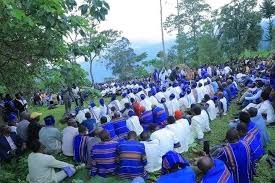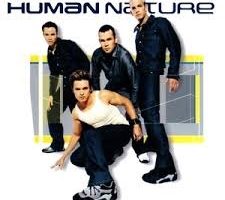Whenever Western authors write books about Africa, their perceptions are said to be skewed by old stereotypes inherited from the colonial era. The old stereotypes about Africa focused on the continent being uncivilized or barbaric, faithless, and living in the state of nature. Even modern philosophers like the German idealist George Hegel used to say that the absolute spirit or the movement of history had not yet reached Africa and its people. According to him, Africa remained outside of history until what he called “the absolute spirit” reached it. Africa was consigned to the land of darkness.
Modern stereotypes about Africa are no better than the old ones. Twentieth century conception of Africa in the minds of Europeans was one of darkness where philosophy, culture and arts and literature had not touched its people. Some of them however acknowledged that Africa had a world view of its own or a philosophy worth speaking of. Placid Temples was a Belgian missionary who lived and worked in Africa, among the Bantu people and studied their world views and faith in pride to come up to the conclusion that Africans had a kind of philosophy he called “Bantu philosophy”. According to him “Bantu Philosophy (La philosophie bantoue in French) is a 1945 book written by Placide Tempels which argues that the Bantu peoples of Sub-Saharan Africa have an implicit philosophy, and attempts to describe its basic tenets.”
African philosophy enjoyed recognition rather lately and nowadays it is understood as true philosophy. “Like Western philosophy, African philosophy contemplates the perceptions of time, personhood, space and other subjects. Africana philosophy can be formally defined as a critical thinking by Africans and people of African descent on their experiences of reality.”
More recently, Africa has attracted the attention of Western academics in all fields of studies including anthropology, politics, economics, and history as well as in other subjects. Some of them are interested in African culture, others in African traditions, folklore, and peace or war. Post-independence Africa is often portrayed as a land where poverty, hunger and conflicts reigned supreme. Wars have also attracted various established journalists and authors who wrote books, and film scripts as well as reference materials that were mostly biased with new stereotypes appearing in almost every page and distorted perceptions defining their attitudes. Some of the writings were made for money and did not care about the authenticity of the stories. Others disregarded the need for painting a realistic picture of events rather than presenting their fancies as facts.
Western media accounts of Africa have not changed over the decades. According to one report, “Western news reporting in general is often portrayed as being neutral and impartial, and the journalist as a neutral and balanced arbiter. There is still a popular misconception that anything written or seen on television is true. This is often a huge myth which needs to be exploded.
“Firstly, information does not exist in an ideological vacuum. Information on Africa is often presented without a historical and analytical context to explain the roots of a conflict. On account of this lack of historical and analytical examination, most Western reports resort to attributing all conflicts in Africa to primordial irrationality and tribalism.”
Another study revealed that, With the formal independence of most African countries in the 1950s and ’60s, anthropologists and modernization theorists helped to portray a view of the dark, exotic Africa as being “emergent Africa.” The 1970s saw an image of “dependant Africa,” advocated by the dependency theorists who used the concept and theory of dependence in analyzing Latin America, to understand Africa’s underdevelopment. In the 1980s and ’90s Africa has not only been portrayed as dependent Africa but as “crisis and pitiable Africa.”
As a rule, there is a radical difference in perceptions and attitudes between Western writers and their African counterparts. Let us take the example of books on the 1967 civil-war in Nigeria known as the Biafra conflict. Many books, both fiction and non-fiction, have been written on the Biafra conflict in Nigeria back that lasted between 1967 or known as the Biafra civil war that lasted from July 6 1967 to January 1970. The war erupted when the so-called republic of Biafra tried to separate from Nigeria and declared independence in 1967. Films were also produced from some of the books like Dogs of War by British writer Frederick Forsyth.
“Dogs of War (1974)” is a war novel by Frederick Forsyth featuring a small group of European mercenary soldiers hired by a British industrialist to depose the government of the fictional African country of Zangaro. The story details a geologist’s mineral discovery, and the preparations for the attack: soldier recruitment, training, reconnaissance, and the logistics of the coup d’état (buying weapons, transport, and payment). Like most of Forsyth’s work, the novel is more about the protagonists’ occupational tradecraft than their characters. The source of the title, The Dogs of War, is Act III, scene 1, line 270 of Julius Caesar (1599), by William Shakespeare: Cry, ‘Havoc!’, and let slip the dogs of war.
The book was initially received with critical acclaim because Forsyth was an established writer of war thrillers with the background historical events such as the Nigerian civil war and a book with the tile, The Day of the Jackal is, “a political thriller novel about a professional assassin who is contracted by the OAS, a French dissident paramilitary organization, to kill Charles de Gaulle, the President of France.”
By any means, Frederick Forsyth cannot be described as a serious literary novelist. He is in a class with British writers like John Le Carre who was a British author, best known for his espionage novels. During the 1950s and 1960s, he worked for both the Security Service (MI5) and the Secret Intelligence Service (MI6). Forsyth’s non-literary style was evidenced in The Dogs of War as fictional thriller with the usual bias and misconceptions about Africa and the black characters in the book. As one critic noted, “The book as a whole is informed with a kind of post-imperial condescension toward the black man that shows through not only in the bland assumption that five Europeans and six trusty native gun-bearers are enough to deal with the mad dictator’s palace guard of 40 to 60 élite troops and a back-up army of 400 men, but also in some openly patronizing references to the Africans’ fear of fighting in the dark and their “annoying habit” of shutting their eyes when firing automatic weapons.
“In The Dogs of War, military prowess is the measure of a man, and of his civilization too, and to the extent that Forsyth encourages such a view, the future of poor, unhappy, plundered Africa looks that much bleaker.”
Contrary to Frederick Forsyth’s The Dogs of War, young Nigerian writer Chimamanda Ngozi Adichie has come out with a novel depicting the Biafar war in a realistic way by taking real characters and real events as backdrops. Adichie’s novel is entitled, Half of a Yellow Sun and is considered perhaps the best fictional account of the war so far. According to one review of the book, “The novel takes place in Nigeria prior to and during the Nigerian Civil War (1967–70). The effect of the war is shown through the relationships of five people’s lives including the twin daughters of an influential businessman, a professor, a British expat, and a Nigerian houseboy. After Biafra’s declaration of secession, the lives of the main characters drastically change and are torn apart by the brutality of the civil war and decisions in their personal lives.”
Speaking of the war and the events then taking place, Adichie was quoted as saying that, the story in Half of a Yellow Sun centers on the war. Adichie grew up in the aftermath the war: “The need to write about it came from growing up in its shadow. This thing that I didn’t quite understand was my legacy. It hovered over everything.” She has stated that she believes many of the issues that caused the war remain today. She further commented that the war is talked about “in uninformed and unimaginative ways”, and that the war is as important to the Igbo people her book features today as it was then. Because none of the major political events were changed in the book, Adichie said that the book contained “emotional truth”, and that the book showed the war had a significant impact upon the people of Nigeria.
Indirectly Adichie’s novel is critical of many aspects of Western journalism and reporting about the war. Half of a Yellow Sun is heavily critical of the Western media’s coverage of the Biafran War. The rule of Western journalism is obvious when Richard meets with the foreign journalists: “Richard exhaled. It was like somebody sprinkling pepper on his wound: Thousands of Biafrans were dead, and this man wanted to know if there was anything new about one dead white man. Richard would write about this, the rule of Western journalism: One hundred dead black people equal one dead white person.” Since it is clear that white journalists have a greater influence, Madu asks Richard to write about the war for the Western press: “They will take what you write more seriously because you are white. If you really want to contribute, this is the way that you can. The world has to know the truth of what is happening, because they simply cannot remain silent while we die.”
As we can see from the above, the attitude of the Western media towards African events has not changed much. The same bias, anti-African sentiment and distortion of the truth was evident in media coverage of more recent wars and conflicts in Somalia and Rwanda in particular.
Critical acclaims have accompanied the publication of Adichie’s novel which, according to one reviewer, “She wowed us with this transcendent tale about war, loyalty, brutality, and love in modern Africa. While painting a searing portrait of the tragedy that took place in Biafra during the 1960s, her story finds its true heart in the intimacy of three ordinary lives buffeted by the winds of fate. Her tale is hauntingly evocative and impossible to forget.”
Another reviewer called the book, “alluring and revelatory, eloquent, prize-winning Nigerian writer Chimamanda Ngozi Adichie is quickly proving herself to be fearless in the tradition of the great African writers.” Nigerian writer Chinua Achebe commented: “We do not usually associate wisdom with beginners, but here is a new writer endowed with the gift of ancient storytellers,” and said about Adichie: “She is fearless, or she would not have taken on the intimidating horror of Nigeria’s civil war.” In 2019, Half of a Yellow Sun was ranked by The Guardian as the 10th best book since 2000.
Such is the contrast between Forsyth’s Dog of War and Adichie’s Half of a Yellow Sun, two books about the Biafra civil war written by two different writers, one British and the other African. It is not difficult to note the diametrically opposed perceptions, motives, objectives and commitments of the two writers. Adichie’s novel is a classic on the Biafra war while Forsyth’s political thriller is much of a temporary distraction in the tradition of easy to read and easy to believe Western literary thriller whose values and weights depend on the media coverage they receive and not on the real worth of the books.
BY MULUGETA GUDETA
THE ETHIOPIAN HERALD FRIDAY 1 APRIL 2022




